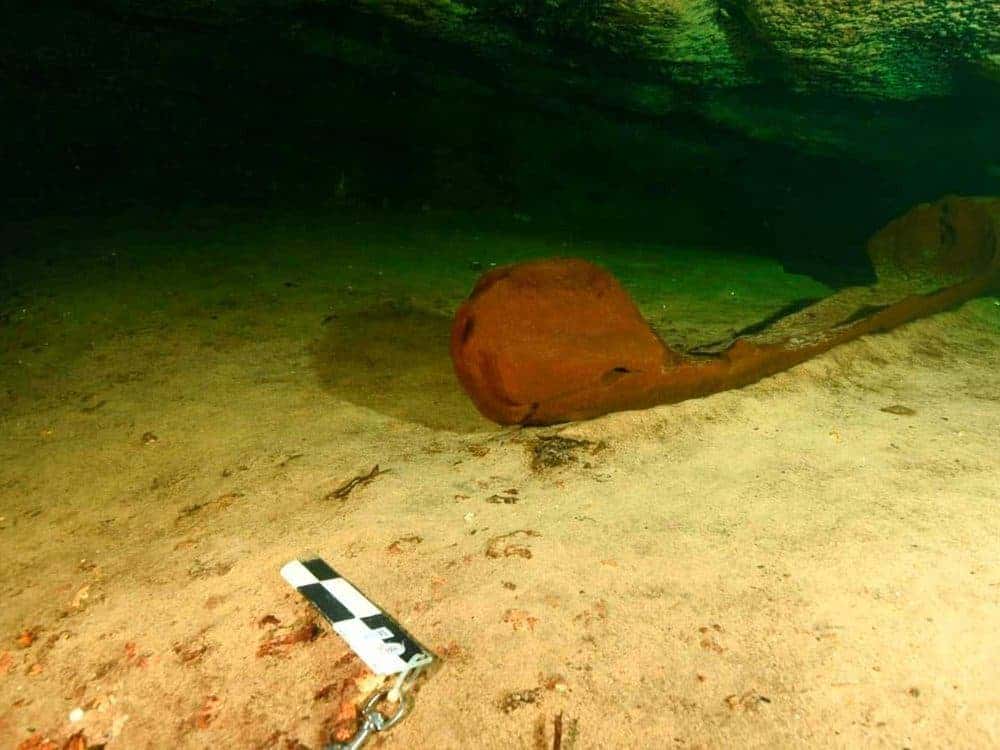
Divers found a perfectly preserved wooden canoe used by the ancient Maya submerged in an underwater cavern in southern Mexico. The almost completely intact canoe is believed to be almost 1,000 years old and is now recognized as the most well preserved Mayan boat ever found.
According to archaeologists from the Institute of Anthropology and History (INAH) in Mexico, the canoe was likely used to transport water from the cenote near the ruins of Chichén Itzá or deposit ritual offerings. A cenote is basically a sinkhole filled with freshwater, thousands of which dot the Yucatán peninsula.
The extraordinary discovery was made almost by accident while archaeologists were surveying the area before it might get destroyed by a controversial train project. The so-called Maya Train is supposed to connect Mexico’s poorest southern states with richer regions and promote tourism. But critics, among them prominent native figures, believe the new railroad will do more harm than good, potentially threatening hundreds, maybe thousands of archaeological sites like the cenote at Chichén Itzá.

While diving in the cenote, archaeologists found a cave about 4.5 meters (15 feet) below the water level. Inside the cave, they found the canoe. But they also explored an ancient well and nearby deep valley where they discovered mural paintings, a ceremonial knife, and fragments of 40 pottery vessels that were likely intentionally broken as part of ritual events. Collectively, these artifacts suggest that the canoe was also involved in ritualistic activities.
The canoe is over 1.6 meters (5 feet) long and 80 centimeters (2.5 feet) wide, and preliminary research suggests that it dates to between 830 CE and 950 CE. However, a sample was sent to Sorbonne University in Paris where scientists there will perform a dendrochronological analysis (tree ring counting) to provide a more precise dating.

If the currently estimated dating is confirmed, that would mean the canoe was employed very close to the height of Maya civilization. During this zenith, there were dozens of cities scattered across southern Mexico and Central America, which were home to as many as ten million people, and the Maya made important achievements in math and art.
According to INAH, archaeologists have already commissioned a 3-d model of the canoe, which they hope to release soon in order to facilitate further research and the manufacturing of full-scale replicas.


